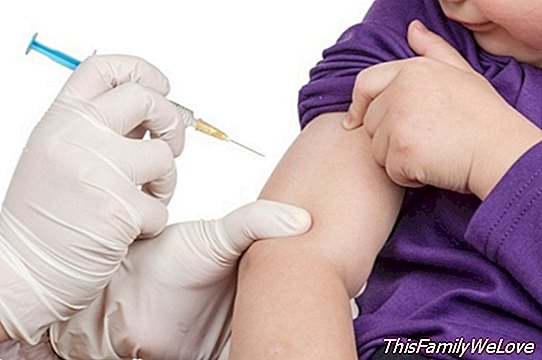What is diphtheria: contagion, symptoms and vaccine

This week we have known that a six-year-old boy from Olot (Girona), who was not vaccinated, was admitted to the Vall d'Hebron hospital in Barcelona because of diphtheria. It is the first case in Spain since 1986. It is so much the case of the last cases, that it is normal to have forgotten this serious illness. We tell you what it is, what are Your symptoms and how it is spread.
Diphtheria is a very serious disease that can be fatal. It was "a scourge in the last century", but thanks to vaccines is practically controlled, as explained by the Spanish Association of Pediatrics (AEP).
What is diphtheria
Is a contagious respiratory disease that occurs after infection by a bacterium, the diphtheria bacillus, and that causes "a very serious condition in the upper respiratory tract," that is, in the throat and nose. As they comment from the AEP, it can end up causing asphyxia in the sufferer, as well as attacking the heart and the brain.
Luckily, this is an "exceptional disease in Europe", and this has occurred thanks to the vaccines, which are fully recommended by pediatricians. In fact, there is no vaccine designed solely against this disease, but it is included in different combined vaccines, which means that upon reaching adolescence, those who have followed the calendar "will have received six doses of vaccine against diphtheria" .
Symptoms of diphtheria
In the early stages of this disease, it may become confused with a strong throat pain Accompanied by fever moderate and inflammation of the lymph nodes of the neck. However, there is something key that distinguishes the disease: the toxin produced by the bacteria Create a thick layer It covers the inner surface of the nose, throat and other respiratory tracts.
This layer, which is grayish or black and causes problems breathing and swallowing, is what allows doctors to distinguish diphtheria from other infections, as explained from the Nemours Center for the health of children KidsHealth.
Also, from the health system of the United States Government explain that this disease it can affect the heart, causing even heart failure. There have also been cases where it affects the nerves and produces paralysis of some parts of the body.
How is this disease spread?
Diphtheria is a disease especially contagious, as they say from Kidshealth. Its form of transmission is by air: when an infected person sneeze, cough or even laugh close to other people.
People who have this disease can infect it during four weeks even though they have no symptoms. According to this center for the health of children, the period until symptoms occur is between one day and six, although it is normal to be two or four.
Why the diphtheria vaccine is so important
The diphtheria vaccine, as it has been commented, it is part of the combined vaccines (they are against several diseases at the same time). Its main characteristic is that, once injected, the body can not produce the disease, but it maintains the ability to stimulate the production of defenses or antibodies against it.
The vaccines that include the components of diphtheria are:
- Hexavalent: against diphtheria, tetanus, pertussis, H. influenzae type b, polio and hepatitis B. It is administered in the first and second year of life.
- Pentavente: Diphtheria, tetanus, pertussis, H. influenzae type B and polio. It is administered in the first and second year of life.
- DTPa: prepared from 4-6 years that includes components of Diphtheria, tetanus and whooping cough
- Adolescent reinforcement vaccines, Tdpa and Td, in which diphtheria is "accompanied" by components of tetanus and whooping cough.
For these experts of the Spanish Association of Pediatrics, the vaccine against diphtheria should be administered to everyone: both children and adults who are not. The form of administration is the common one: it is punctured in the thigh or the arm, according to the age, and it can be given the same day that other vaccines are received.
Adverse reactions of the diphtheria vaccine
The Adverse reactions of this vaccine are rare and mild However, when administered in the form of combined vaccines, it is possible that other components generate adverse effects.
In general, the most frequent is fever, slight swelling or redness in the area of the injection, or a slight irritability or drowsiness in the days following the vaccine. Occasionally there have been cases of persistent crying, neurological alterations and allergic reactions.
Angela R. Bonachera




